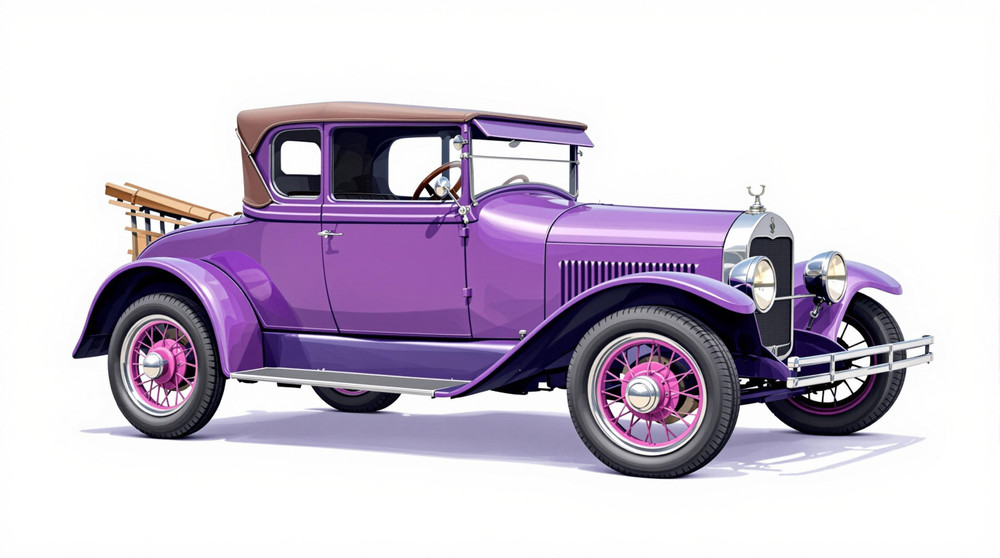Image of 1921 Dodge Model 30, Note: These illustrations use artistic license and may differ from actual historical models.
Performance Metrics
Fundamental Metrics
Emotional Appeal
MMP Rating
| Engine Specifications | |
|---|---|
| Engine: | Inline 4-cylinder engine |
| Displacement: | 212 cubic inches |
| Horsepower: | Estimated 35 horsepower |
| Torque: | Not available |
| Compression Ratio: | Not available |
| Ignition System: | Battery and coil |
| Cooling System: | Water-cooled |
| Performance Specifications | |
| 0-60 Time: | Not available |
| 1/4 Mile Time: | Not available |
| Top Speed: | 50 mph |
| Transmission and Drive | |
| Drive Type: | Rear-wheel drive |
| Transmission Type: | 3-speed manual |
| Fuel and Efficiency | |
| Fuel System Type: | Carburetor |
| MPG: | Not available |
| Dimensions and Brakes | |
| Brakes: | Mechanical drum brakes |
| Wheelbase: | 112 inches |
| Weight: | 2,400 lbs |
Note: Specifications for classic cars are given to the best of our ability, considering the limited and variant data available.
Stepping Back in Time: The 1921 Dodge Model 30
The year is 1921, and the Dodge Model 30 stands as a testament to early automotive innovation. Born from the ingenuity of the Dodge Brothers, John and Horace, who were once key suppliers for Ford, this vehicle not only marked their independence in the automotive industry but also introduced several advancements that would set new standards. With its all-steel body construction, a departure from the commonplace wood-framed automobiles, the Model 30 was a pioneer of durability and safety.
In an era where cars were transitioning from luxury items to essential tools for daily life, the Dodge Model 30 emerged as a reliable workhorse. It was during this time that the car earned a unique place in history by becoming the first vehicle to reach the summit of Pikes Peak, proving its mettle and performance.
Design and Innovation: A Closer Look at the Dodge Model 30
The exterior of the Dodge Model 30 exuded strength and simplicity. Its tall, boxy silhouette was highlighted by large, sturdy fenders and a bold, upright grille. The car's design was functional yet elegant, with an attention to detail that spoke volumes about the craftsmanship of its era. Inside, passengers were treated to a cabin that prioritized comfort and quality. The materials used were robust, reflecting the utilitarian nature of vehicles at the time. Yet there was an air of refinement in the simplicity of its design. Technologically, the Model 30 stood out with features such as an electrical system for starting, lighting, and ignition—a significant step forward when many cars still relied on hand cranks. It also boasted a sliding-gear transmission which offered drivers greater control over their vehicle. Color options for the Dodge Model 30 were limited compared to today's standards, but they included choices that resonated with consumers. The most popular hues tended to be dark and stately, further enhancing the car's dignified presence. As for body styles, customers could select from touring cars to roadsters and sedans. The four-door touring model became particularly iconic for its spaciousness and practicality.
Historical Significance: The Legacy of Dodge Model 30
The Dodge Model 30's impact on automotive design cannot be overstated. It was one of the first mass-produced cars to feature an all-steel body—a significant leap forward in terms of safety and manufacturing efficiency. This innovation paved the way for future vehicles and cemented Dodge's reputation as a maker of sturdy and reliable cars. What truly set this car apart from its contemporaries was not just its build quality but also its performance. Its robust engineering meant it could withstand more punishment than many other vehicles of its time, which often translated into longer service life.
Performance and Handling: Experiencing the Drive
In terms of performance, while exact figures like top speed and acceleration are not well-documented for modern standards, it is known that the Model 30 was competitive in its class. Powered by a robust four-cylinder engine, it delivered adequate power for both city driving and more demanding rural roads. Handling characteristics were typical for cars of this period—sturdy but without the refined suspension systems seen in later years. Drivers could expect a firm ride that communicated every nuance of the road beneath them. The experience behind the wheel was visceral; from the distinctive sound of its engine to the direct feedback through its steering wheel.
Ownership Experience: Living with a Classic
The Dodge Model 30 served various roles ranging from daily transportation to taking center stage at vintage car shows. Its straightforward mechanical design made maintenance relatively easy for those with basic mechanical knowledge. As with any classic car, reliability is often contingent on regular upkeep; however, owners of a Model 30 could enjoy relatively trouble-free ownership thanks to its robust construction.
Fun Facts: Did You Know?
Beyond its technical achievements, there are plenty of intriguing tidbits about the Model 30. For instance, despite being nearly a century old, some well-maintained examples still participate in endurance rallies today. While not known for breaking speed records or high-profile celebrity ownerships like some classics, it holds a record as one of America's earliest mass-produced automobiles.
Collector's Information: Valuing History
Today, estimating how many Dodge Model 30s were produced can be challenging due to incomplete historical records; however, they are considered relatively rare finds in classic car markets. As for value range, well-preserved or expertly restored models can fetch significant sums—ranging anywhere from $15,000 to $40,000 or more depending on condition and originality. Price trends suggest that values have been steadily appreciating over time as collectors seek out early examples of automotive history.
Conclusion: Celebrating Automotive Heritage
The 1921 Dodge Model 30 represents more than just an automobile; it is a piece of history that helped shape an industry. Its legacy lies not only in its innovative design but also in its demonstration that durability and reliability are timeless virtues in automotive engineering. Whether admired on display or enjoyed on open roads during vintage rallies, this remarkable machine continues to captivate enthusiasts nearly a century after it first rolled off assembly lines—a true testament to its significance.
1921 Dodge Model 30 Catalog of Parts
 1921 Dodge Model 30 Step Plate Pad. Rubber face only. 4-1/4" O.D. Each-SP 18Step Plate Pad. Rubber face only. 4-1/4" O.D. Each
1921 Dodge Model 30 Step Plate Pad. Rubber face only. 4-1/4" O.D. Each-SP 18Step Plate Pad. Rubber face only. 4-1/4" O.D. EachWhy Choose Metro?
For over 100 years, Metro Moulded Parts has been the pinnacle of quality in classic car restoration parts. Our commitment to precision and authenticity in every component ensures a perfect fit and an OEM-level appearance.
- Expert Craftsmanship & Quality: Each part is a testament to our dedication to reliability and perfection, crafted from original designs and thoroughly tested.
- Advanced Technology: We use cutting-edge techniques to create flawless, long-lasting parts that surpass others in performance.
- SuperSoft Sponge – The Ultimate Door Seal: Not only are our door seals 30% softer than competitors', but they're also guaranteed to never leak. They effectively reduce wind and road noise, enhancing your classic car's comfort and driving experience.
- Proudly American: Our parts are a product of American craftsmanship, made in the USA with a spirit of excellence and heritage.
- Unrivaled Warranty: We back our products with a 30-year industry-leading warranty, a testament to our confidence in their quality.
Join us in preserving the legacy of classic cars with parts that are crafted for perfection, not just made.

